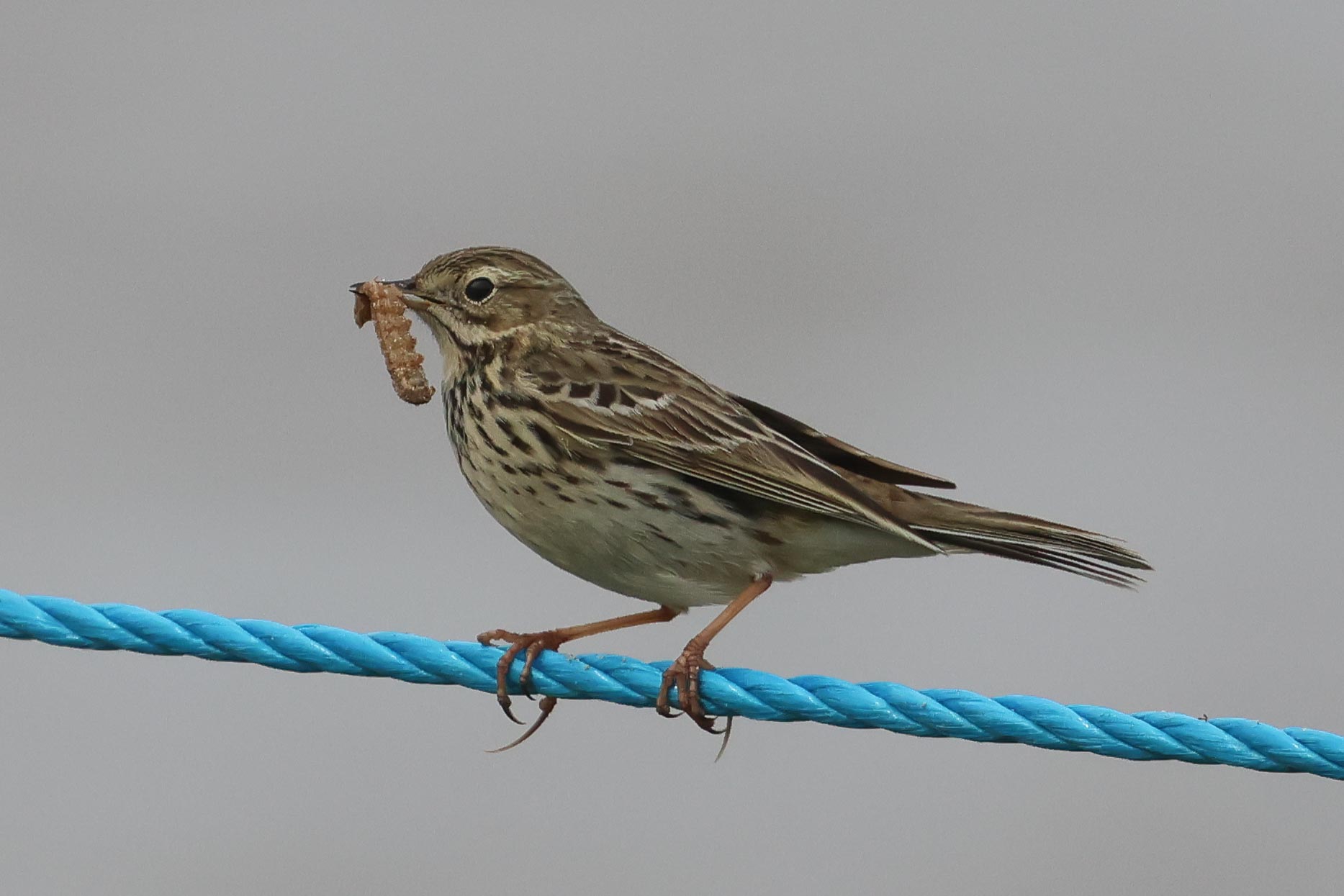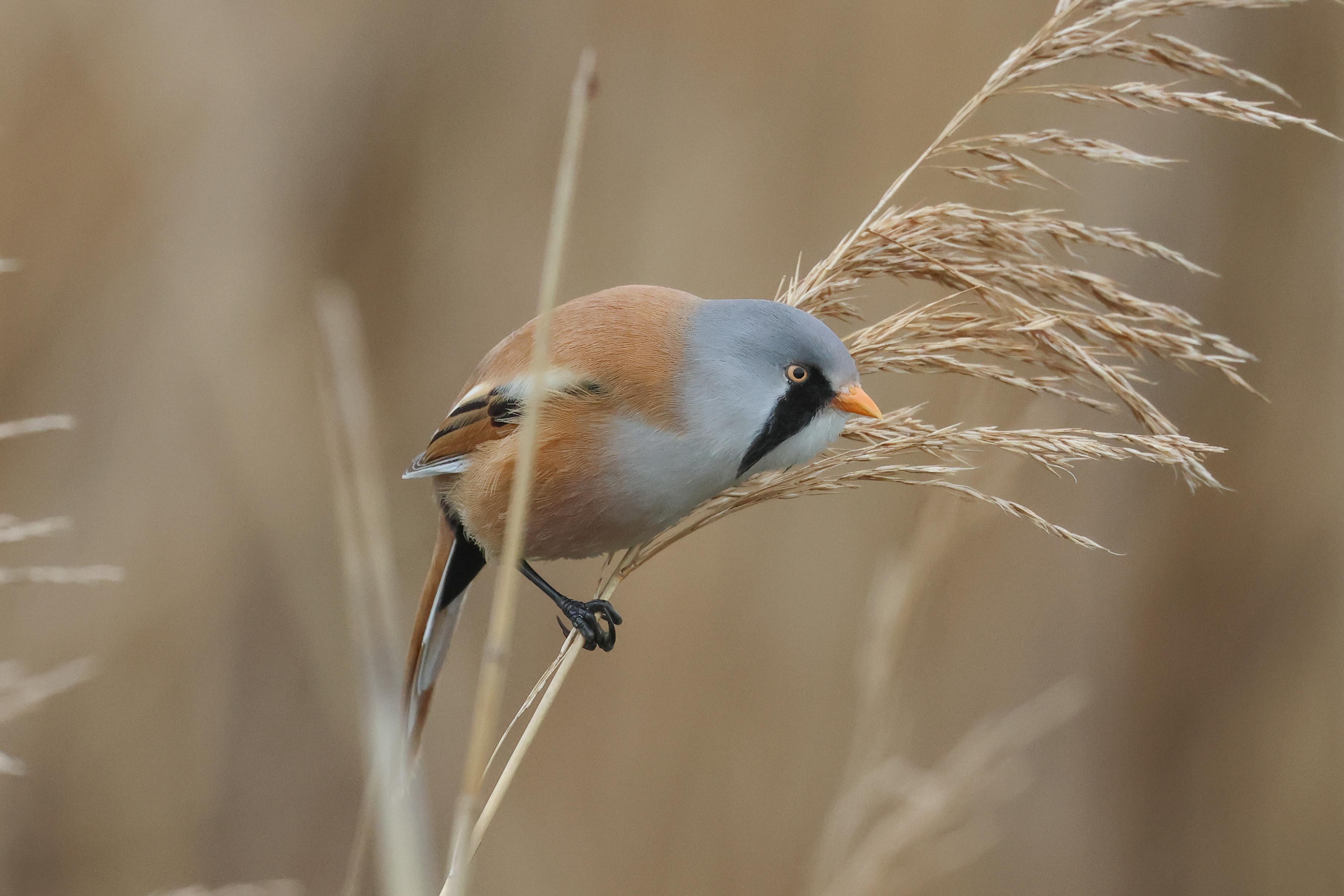A Private Tour today for Oldham U3A. It was forecast to rain heavily in the afternoon, but thankfully once again that turned out to be far too pessimistic. It was a nice bright start to the morning and although it clouded over all we had were a very few spits of light rain around the middle of the day.
Our destination for the morning was Snettisham. As we got out of the minibus, there were two Turtle Doves on the wires, so we got them in the scope while we all got ready. One, presumably the male, chased after a third Turtle Dove and once it had been seen off, it returned to the wires, before the pair dropped down out of view.
Walking in through the bushes, there were several Linnets and Goldfinches feeding down on the short grass. A Greenfinch was wheezing from the trees nearby and then perched briefly in the top of a hawthorn. There were various warblers singing too – Blackcap, Chiffchaff and Cetti’s Warbler.
Continuing on, we could hear the wonderful sound of a Turtle Dove purring and we found a gap in the bushes where we could set up the scope on it. Great views, as it preened and purred, before it flew up and glided round in display flight.

There were more warblers singing as we carried on through the bushes including a singing Common Whitethroat and a couple of Willow Warblers. A Marsh Harrier drifted over behind us and a large flock of finches whirled around the open grassy area as a Sparrowhawk shot through low – mainly Linnets but a few Goldfinches and a Greenfinch with them.
We crossed over to the outer seawall, where it was high tide on the Wash. Large areas of the beach have been fenced off for breeding birds and scanning with the scope from a safe distance we could see three Ringed Plovers lurking in the dry seaweed along the tide line. Further up were two Oystercatchers. Several people walked up and down the beach below the cordons and even though they had their dogs on leads and were outside the ropes, the Ringed Plovers still ran up the beach as they passed.
We walked a short distance up the seawall. Two Yellow Wagtails flew over calling and disappeared off south. The flock of Linnets landed in a small hawthorn in the middle of the grassy area below us, so we had a look at those in the scope. A Common Whitethroat landed on the brambles beside us. A Meadow Pipit landed on the rope fence nearby with a caterpillar in its bill.

A small flock of waders flew down over the water from further up the beach and landed on the shore below us, a mixture of Turnstones and Sanderling. Some of the Turnstone were started to gain their brighter breeding plumage, chestnut in the upperparts and white faces, but most of the Sanderling were still in silvery grey non-breeding plumage.
Most of the Coastal Park was burnt in a big fire last summer and we could see all the charred bushes to the north. The grass and reeds are growing back below, but it will take years for the scrub to recover. We weren’t going to be able to walk up to Ken Hill Marshes along the inner seawall today, so we cut back down the way we had come. A short diversion in round the pools produced a couple of Sedge Warblers and a brief Broad-bodied Chaser. The Turtle Doves were still purring as we made our way back to the vehicles.
Making our way back round the coast, we stopped next at Thornham. There were a few Redshanks in the harbour, as we made our way up onto the seawall. We stopped to look at some Brent Geese out on the grazing marsh beyond, and noticed the Garganey on the small pool to the south, so walked over for a closer look. There was just the drake here now, swimming round the pool, feeding and calling occasionally. It flew across to another pool, came back in again, and then flew off towards the village.

There were three Ruff on the pool too, all males and all in different stages of moult to bright breeding plumage, though none yet getting their outlandish ruffs. Walking back up the seawall to the corner, there were more Ruff on the large flood in the field, including a small group of females, Reeves. A Lapwing was brooding its young on the edge of the water too. Two Little Ringed Plovers flew off calling from one of the smaller pools out in the middle.
Looking out over the harbour, we got the scope on several Grey Plover, some looking very smart now with their black bellies and faces. A Curlew was feeding on the far edge of the channel and more were roosting out on the saltmarsh beyond. Four Little Terns flew round over the beach.
We went round to Titchwell for lunch in the picnic area. It had clouded over by the time we set off out onto the reserve and it felt like it was threatening to rain. A pair of Stonechats were feeding along the brambles on the edge of Thornham grazing meadow as we passed. A couple of Marsh Harriers were hanging in the breeze out over the reedbed and one male perched briefly in the dead trees at the back. Several House Martins, Swallows and one or two Swifts were hawking low over the reeds, the insects having come low in the cloudy and breezy conditions now.
Despite the weather, the Bearded Tits were showing very well around the pools just below the bank, although they did keep disappearing into the reeds. There was at least one family – a smart moustachioed male, a female and one or two fresh juveniles still with only partly grown tails. We spent some time watching them today and, with a bit of patience, everyone got very good views in the end. There were one or two Reed Warblers, Sedge Warblers and Reed Buntings here too.

As we carried on up towards Island Hide, a dark-billed Great White Egret flew in over the bank behind us and dropped down into the reeds. A flock of Black-tailed Godwits whirled round over the back of the reedbed. There were lots of Avocets and Black-headed Gulls on the islands on the Freshmarsh. The Mediterranean Gulls were more distant, on the islands with the other gulls further back. A Sandwich Tern flew round and landed next to a second where we could get them in the scope and see their yellow-tipped black bills and shaggy crests.
There were not many waders on here today, but scanning round the edge we found a Common Sandpiper, and later two flew out and landed on the edge of the islands. We heard a Greenshank calling out over the saltmarsh and watched in fly in over our heads and disappear straight over the Freshmarsh. We stopped to admire a pair of Gadwall feeding on the water right below the bank, where we could really appreciate the complex patterns of their plumage.
As it was still staying dry for now, we decided to head straight on out in case the rain might be arriving later. There wasn’t much to see on the Volunteer Marsh or the Tidal Pools today – there had apparently been a Spoonbill out here earlier, but there was no sign of it now. A Common Tern flew in past us and straight on towards the Freshmarsh. There were a few Brent Geese feeding on the saltmarsh.
We decided to head back and have a look in at Parrinder Hide. There were a couple of Ringed Plovers and several Little Ringed Plovers on the islands – we had very good close views of one of the latter in the scope, so we could see its golden yellow eye ring. We had a better view of a couple of Mediterranean Gulls from here too, as they flew in to one of the nearer compartments to bathe.
We had a quick stop in Island Hide on our way back, where several Common Terns were hiding on the far side of the closest island, behind the Black-headed Gulls. A pair of Common Pochard were on one of the small pools on the edge of the reedbed now.

Back at the Visitor Centre, we stopped for a tea break. The staff were just packing up but kindly let us know that there was a Spotted Flycatcher now in the picnic area. So after we had finished our refreshments, we walked over to see if we could see it. A couple of locals were there and told us it was regularly returning to the same alder tree and sure enough it flew back in almost immediately. Several times it returned as we watched, and we had good views of it in the scope above our heads. A scarce spring migrant here on the coast, this one was probably stopping off on its way to Scandinavia for the breeding season.
A nice bird to end a very pleasant spring day in NW Norfolk – and we had stayed dry too!
















